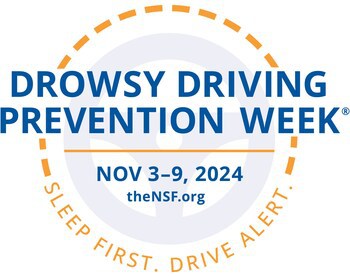
As Drowsy Driving Prevention Week® (Nov. 3–9) kicks off, the National Sleep Foundation (NSF) has released findings that show Americans are much less likely to avoid driving when tired than when they’ve had a few drinks. NSF’s new survey reveals that while only 4 in 10 adults consider finding alternatives to driving if they’re sleep-deprived, nearly 7 in 10 will find another way home after drinking.
Experts warn that drowsy driving, like driving under the influence of alcohol, poses a serious risk to road safety. “Drowsy driving is impaired driving,” NSF’s Senior VP of Research, Dr. Joseph Dzierzewski, stated. “The risks are severe.” According to AAA and NSF data, drowsy driving causes around one-fifth of all fatal crashes and accounts for 10% of all crashes leading to hospitalization, totaling over 300,000 police-reported incidents, 100,000 injuries, and 6,400 deaths in the U.S. each year.
Despite the risk, NSF found a public health gap: nearly 60% of drivers admit they’ve driven while too tired to keep their eyes open. “We want people to know that driving on a few hours of sleep is similar to driving after a few drinks,” Dzierzewski emphasized. He urges Americans to plan for safe travel when tired, suggesting alternatives like rideshares or calling friends to stay safe on the road.
More Americans Avoid Driving Drunk than Driving Sleep-Deprived
- Key findings from NSF’s survey spotlight the disparity in attitudes toward drowsy and drunk driving:
Only half of adults are likely to avoid driving if they haven’t had enough sleep, while over 8 in 10 will delay or change plans after drinking.
Nearly 90% of adults say they would discourage a friend from driving drunk, but fewer urge others to avoid driving when too tired.
NSF CEO John Lopos added, “Getting the sleep you need is essential for health and safety. Being awake and alert is as crucial to safe driving as staying sober. We hope everyone will take these findings to heart.”
NSF’s Tips for Staying Safe**
To help reduce the risk of drowsy driving, NSF suggests:
- Aim for the recommended 7–9 hours of sleep for adults or 8–10 hours for teens of driving age.
- On long trips, travel with an awake companion and schedule regular rest breaks every 100 miles or two hours.
- Know the signs of drowsiness, like frequent blinking or trouble staying in your lane.
- NSF and its partners, including Waymo and MADD, urge drivers to prioritize rest and use the hashtag #SleepFirst to spread awareness this week. For more resources on drowsy driving prevention, visit the NSF at www.theNSF.org.